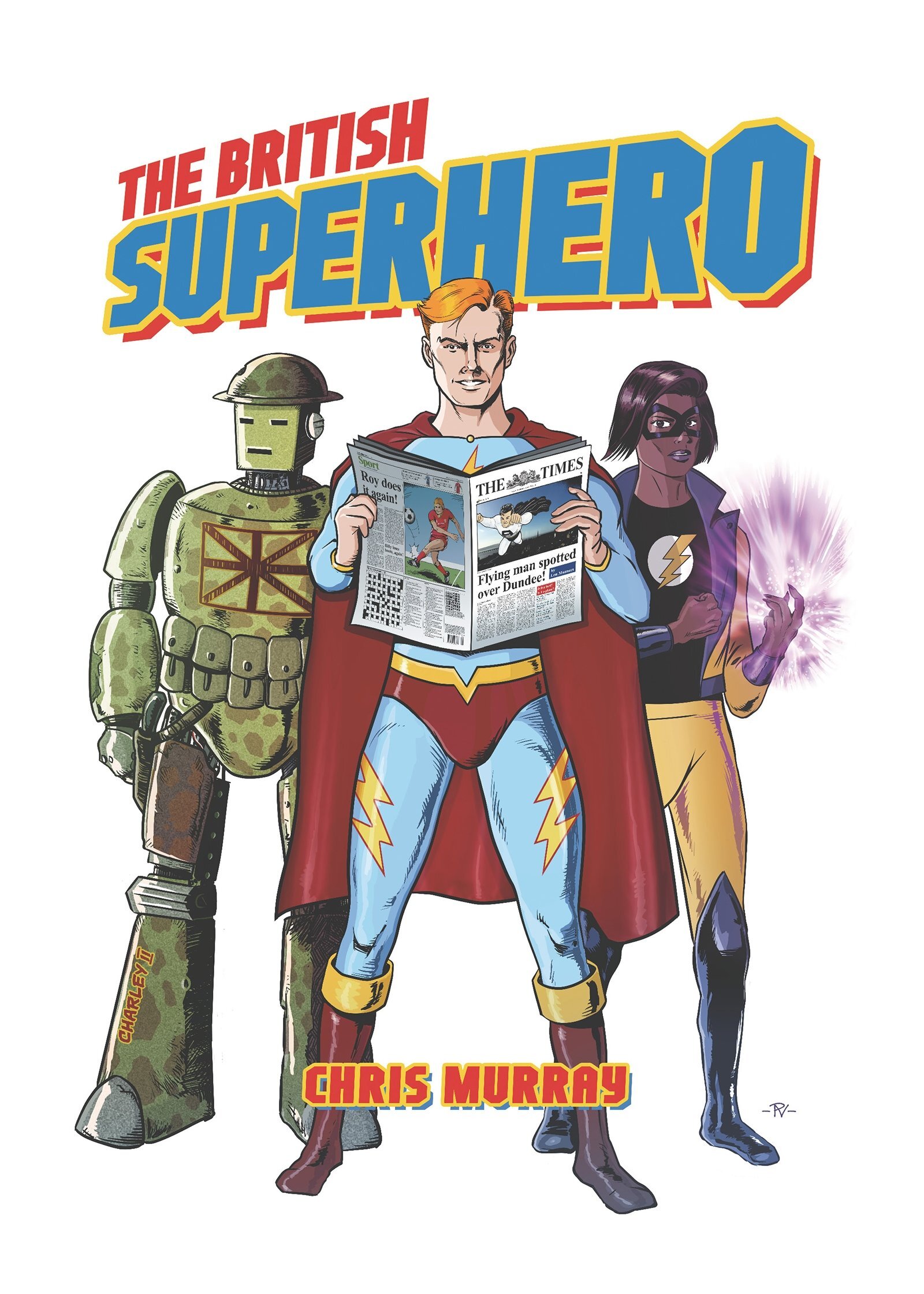Tracing Scottish Comics History (3 of 3) by Chris Murray
/While much of Cartoon Art Production’s output was due to the industriousness of Reader, they had other talents, such as Crewe Davies, who drew Dane Jerrus, Agent One of the Interplanetary Solar Force, and Captain Magnet. Another key creator who worked between Glasgow and Dundee was Irish artist Paddy Brennan, who became a DC Thomson stalwart. His first published work was for The Magno Comics (1946), a one-shot published by Cartoon Art Productions, for which he drew ‘Jeff Collins - Crime Reporter’. Brennan then produced the wonderfully offbeat Marsman Comics (1948), a single issue also for Cartoon Art Productions (Fig. 15). He then went on to work for their flagship title, Super-Duper Comics, which ran until 1950, at which point the company seems to have shut down, possibly due to the fact that an exhausted Reader had quit by this point.
The address given on many of Cartoon Arts comics was 141 Bath Street (Fig. 16). In the midst of writing about Cartoon Arts for my book The British Superhero (2017) I made a short pilgrimage to Glasgow to stand at 141 Bath Street and wonder at the marvels that had been created behind those walls. This was frustrated by the fact that this exact building has been demolished and replaced with a more modern building. This is just a short walk from Hope Street Studios, which I was also visiting as part of this comics pilgrimage. At this point I must acknowledge my long-suffering wife, who having driven me to Glasgow and being dragged around a comics inspired tour of the city, made every attempt to muster patience and understanding as I stood on the corner of Bath Street staring at a new building while lamenting another lost piece of Scottish comics history, lost in reverie at a place that had come to occupy an almost mythical space in my imagination.
Fig. 15: Marsman Comics by Paddy Brennan (Cartoon Art Productions, Glasgow, 1948)
Fig. 16: Cartoon Art Productions annual, showing address as 141 Bath Street, Glasgow
Foldes Press
Another British superhero, Ace Hart, the Atom Man, starred in Superthriller Comic, which was initially published and printed by Foldes Press in 1947 (Fig. 17). Foldes was based in Joppa, Edinburgh, but after a few issues the title was bought by World Distributors Ltd (Manchester), who published the series from 1948 to 1952. After World Distributors Ltd took over Foldes continued to print the comic, and they are quite wonderful comics. The building where Foldes was based still stands in Joppa, but is now a MOT testing centre on one side, with the other side of the building having been converted into a row of houses. After the Bath Street debacle I knew the chances of getting my wife to take me to Joppa (she’s the driver in the family) were negligible. Upon explaining that I wanted to stand outside a MOT testing centre in a kind of comics history reverie, those chances shrunk to zero. Still, the wonder that is google maps street view allowed me to spend a long time examining the building in detail, trying to find of trace of its former life, but it’s just not the same. Some people have a longing to get away on a sunny holiday to some Mediterranean paradise. In wistful moments, my thoughts turn to Joppa. When I eventually manage to find a day when I’m not buried under the endless piles of paperwork, admin and teaching that come with academic life, I’m going to get myself to Joppa. I am not sure what practical or scholarly purpose this will serve. Maybe tucked in the back room of that MOT testing centre is a huge pile of SuperThriller comics, abandoned for decades, just waiting on me… a comics scholar can dream.
Fig. 17: Ace Hart in Superthriller Comic (Foldes Press/World Distributors Ltd, Edinburgh, late 1940s).
The comics produced by small publishers in Scotland tell an intriguing story, as do the spaces they once occupied. Tracing this almost lost and forgotten history of Scottish comics has become something of a weird obsession, but one that is currently finding a healthy outlet as I write my next book, Comicsopolis – A History of Comics in Dundee, which will hopefully make an appearance in 2020. There is so much more history to uncover, and, at the risk of stretching my wife’s patience beyond breaking point, so many places to visit. So, if you ever see me standing on street corner, staring in reverie at some old building, skulking about an MOT testing centre, or glowering at a Primark store, you’ll know why.
Professor Christopher Murray is Chair of Comics Studies at the University of Dundee. He runs the MLitt in Comics and Graphic Novels (https://www.dundee.ac.uk/postgraduate/comics-graphic-novels-mlitt) and co-edits Studies in Comics (https://www.intellectbooks.com/studies-in-comics). He researches British Comics, and is author of The British Superhero (University Press of Mississippi, 2017) and Comicsopolis – A History of Comics in Dundee (Abertay Historical Society, 2020). Murray is director of The Scottish Centre for Comics Studies and Dundee Comics Creative Space, and is editor if UniVerse Comics. He has written several comics, including a number of public information comics on healthcare and science communication themes.
The ‘Remembering UK Comics’ series is curated and edited by William Proctor and Julia Round.
































